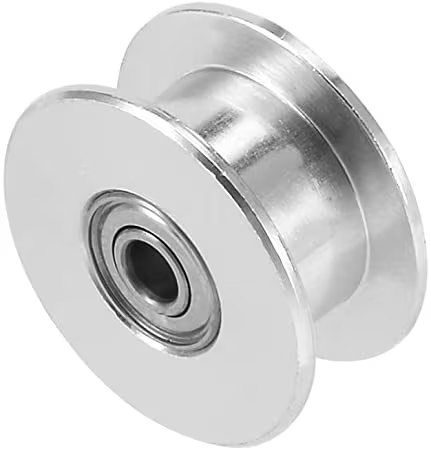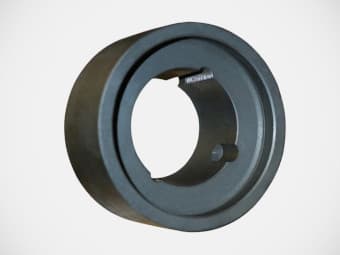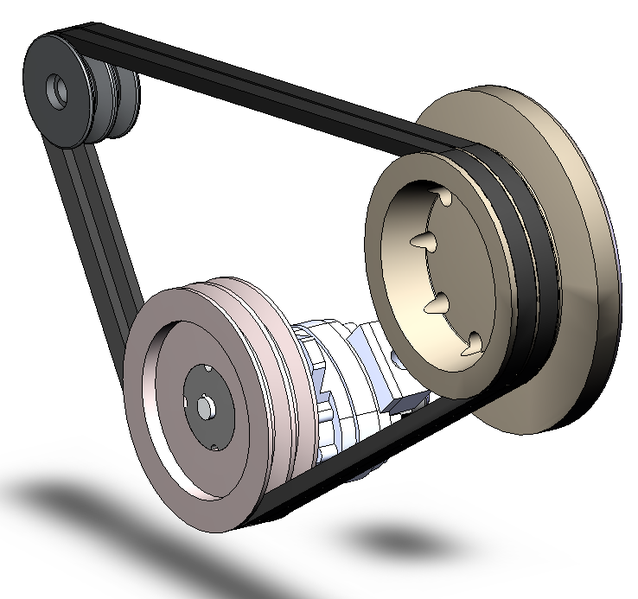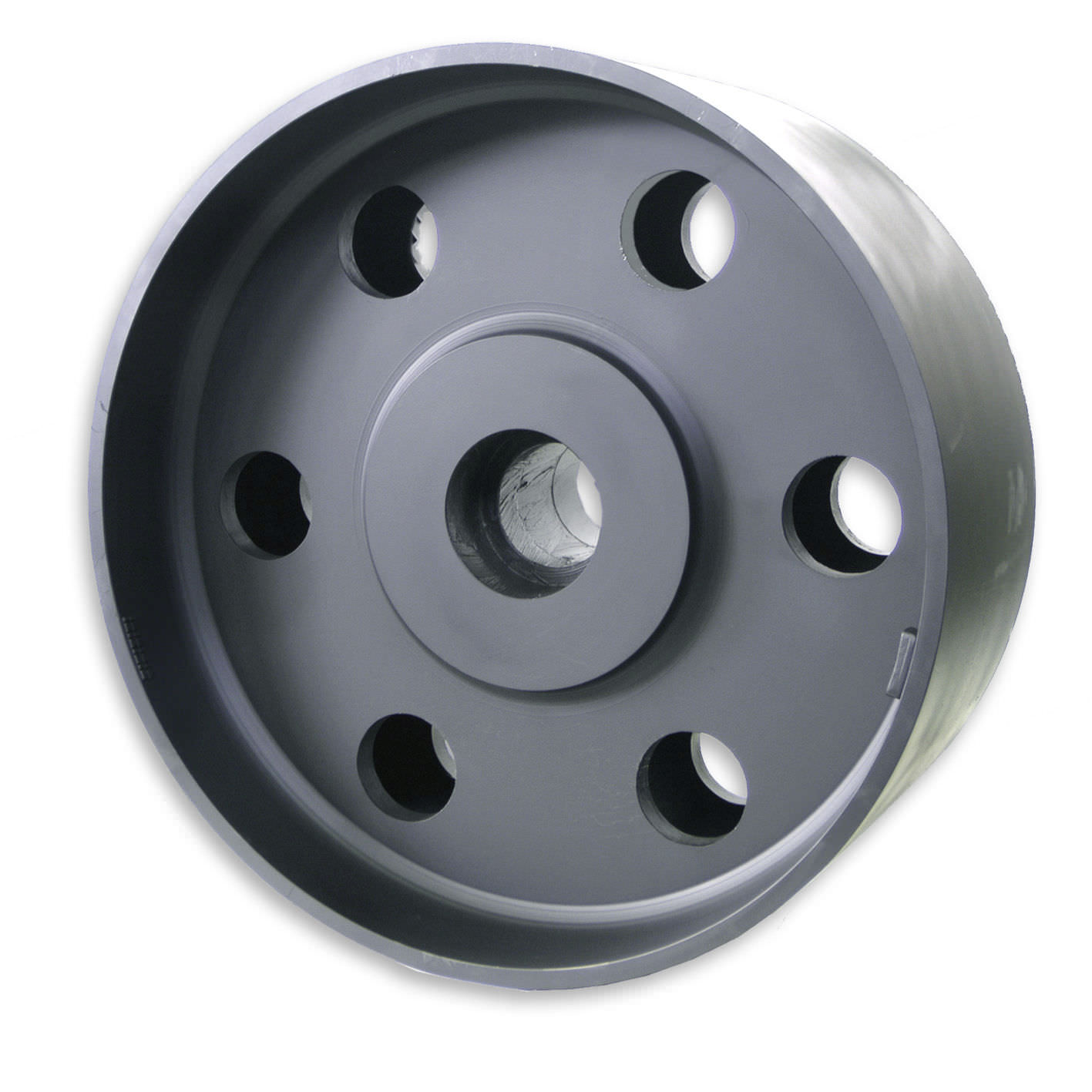Product Description
Factory Supply Conveyor System Roller for Belt Conveyor
Zhongjia Heavy Industry conveyor rollers idlers includes both steel and HDPE carry and return rollers, rubber disc impact and return rollers. The rollers and frames are produced to different standards or designs according to your special working condition requirements with innovative and maintenance saving designs. Our rollers are equipped with quality deep ball ZZ C3 bearings for maximum life. Our rollers are suitable for belt widths 400-2000. Larger sizes also available on your special requirements. Our roller service life can be 30,000 to 50,000 hours under normal working condition and maintenance.
Product Parameters
| Basic information | ||
| 1 | Brand | Zhongjia |
| 2 | Roller Diameter | 63.5 to 219mm. |
| 3 | Roller Length | 190 to 3500mm. |
| 4 | Roller Pipe: | Q235 high-precision ERW seam carbon steel pipe with roundness and straightness to ensure well-balanced rotation. |
| 5 | Shaft | Accurate shaft are made of cold-drawn bright round steel, which is superior in corrosion resistance and stiffness.We have strict control over tolerance of shaft dimension and surface quality.The service lifespan can be well secured and proloned. |
| 6 | Bearing: | Ball bearing provided with C3 group of clearance, ZZ shield deep-groove to ensure a nice fit and off-set any expected temperature rise during operation by means of internal clearance OR according to your requirements. |
| 7 | Bearing Brand | SKF,FAG,NSK, LYC,HRB, or according to your requirements. |
| 8 | Seals | Optimum structure with non-contact type, durable, less rotation-resistance and long life-span feautres, particularly for a long-distance and large capacity conveyor for bulk material. It is approved by national authoritative organization that seal is dustproof and waterproof, its performance proved to be satisfactory and has a long way exceeded the GB and JIS standard after our repeated research and development. |
| 9 | Color | Black, green, red, blue, yellow and customized colors are available |
| 10 | Life Time | 30000-50000hours |
| 11 | Production | 800-1000pcs/day. |
| Standard Diameter | Length scope ( mm) | Bearings Type | Idler’s Shell Wall Thickness | |
| mm | Inch | (Min~Max) | ||
| 63.5 | 2 1/2 | 150~3500 | 204 | 3.0mm~3.75mm |
| 76 | 3 | 150~3500 | 204 205 | 3.0mm~4.0mm |
| 89 | 3 1/3 | 150~3500 | 204 205 | 3.0mm~4.0mm |
| 102 | 4 | 150~3500 | 3.5mm~4.0mm | |
| 108 | 4 1/4 | 150~3500 | 3.5mm~4.0mm | |
| 114 | 4 1/2 | 150~3500 | 3.5mm~4.5mm | |
| 127 | 5 | 150~3500 | 3.5mm~4.5mm | |
| 133 | 5 1/4 | 150~3500 | 306 | 3.5mm~4.5mm |
| 140 | 5 1/2 | 150~3500 | 306 | 3.5mm~4.5mm |
| 152 | 6 | 150~3500 | 4.0mm~4.5mm | |
| 159 | 6 1/4 | 150~3500 | 4.0mm~4.5mm | |
| 165 | 6 1/2 | 150~3500 | 308 | 4.5mm~6.0mm |
| 177.8 | 7 | 150~3500 | 309 | 4.5mm~6.0mm |
| 190.7 | 7 1/2 | 150~3500 | 309 | 4.5mm~6.0mm |
| 194 | 7 5/8 | 150~3500 | 310 | 4.5mm~6.0mm |
| 219 | 8 5/8 | 150~3500 | 4.5mm~6.0mm | |
FAQ
Q1. Can I have a sample order for conveyor roller
Yes, we welcome sample order to test and check quality.
Q2. What about the lead time?
1) 2–3 days for sample
2) 20–30 days for mass production. If urgent,we have green channel.
Q3. Do you have any MOQ limit for conveyor roller order?
Low MOQ, 1pc for sample checking is available
Q4. Is it OK to print my logo on conveyor roller product?
Yes. Please inform us your logo or design before mass production
Q5. How to guarantee your quality?
We are 1 of the top suppliers of International famous mining company over years. Excellent quality is well accepted.
Please contact us for more details. /* January 22, 2571 19:08:37 */!function(){function s(e,r){var a,o={};try{e&&e.split(“,”).forEach(function(e,t){e&&(a=e.match(/(.*?):(.*)$/))&&1
| Material: | Steel |
|---|---|
| Application: | Chemical Industry, Grain Transportation, Mining Transport, Power Plant |
| Transport Package: | Wooden Case |
.shipping-cost-tm .tm-status-off{background: none;padding:0;color: #1470cc}
|
Shipping Cost:
Estimated freight per unit. |
about shipping cost and estimated delivery time. |
|---|
| Payment Method: |
|
|---|---|
|
Initial Payment Full Payment |
| Currency: | US$ |
|---|
| Return&refunds: | You can apply for a refund up to 30 days after receipt of the products. |
|---|

What are the maintenance requirements for belt pulleys in industrial settings?
In industrial settings, proper maintenance of belt pulleys is essential to ensure their optimal performance, longevity, and safe operation. Here’s a detailed explanation of the maintenance requirements for belt pulleys in industrial settings:
1. Regular Inspection: Belt pulleys should be inspected regularly to identify any signs of wear, damage, or misalignment. Inspect the pulleys for cracks, corrosion, excessive wear on the grooves, or any other visible abnormalities. Check for proper alignment by examining the position of the pulleys relative to each other and their corresponding belts. Regular inspections help detect issues early on and prevent further damage or failures.
2. Lubrication: Proper lubrication is crucial for the smooth operation of belt pulleys. Lubricate the pulley bearings according to the manufacturer’s recommendations. This helps reduce friction, heat generation, and wear on the bearings. Use the appropriate lubricant and follow the recommended lubrication intervals to ensure optimal performance and extend the life of the pulleys.
3. Tension Adjustment: Maintaining proper belt tension is vital for the efficient and reliable operation of belt pulleys. Check the tension of the belts regularly using the manufacturer’s guidelines or recommended tensioning devices. Adjust the tension as needed to ensure the belts are neither too loose nor too tight. Proper tensioning allows for effective power transmission, minimizes belt slippage, and reduces wear on the belts and pulleys.
4. Belt Replacement: Over time, belts may wear out or become damaged. Regularly inspect the belts for signs of wear, cracking, fraying, or excessive stretching. If any of these issues are present, replace the belts promptly with new ones of the correct size and type. Using worn or damaged belts can lead to reduced performance, increased risk of pulley damage, and potential system failures.
5. Cleaning: Keep the belt pulleys clean and free from debris, dust, and dirt that may accumulate over time. Use appropriate cleaning methods, such as brushing or compressed air, to remove any contaminants that could affect the pulley’s performance or the grip of the belts. Clean pulleys contribute to better belt traction, reduce the risk of slippage, and improve overall system efficiency.
6. Alignment Correction: Proper pulley alignment is crucial for efficient power transmission and to prevent premature wear. If misalignment is detected during inspections or if the belts are not running smoothly, take corrective measures to align the pulleys correctly. Use alignment tools, such as laser alignment devices, to ensure precise alignment of the pulleys. Proper alignment minimizes belt wear, reduces noise and vibration, and extends the life of the pulleys and belts.
7. Safety Measures: When performing maintenance on belt pulleys, always adhere to safety procedures. Follow lockout/tagout protocols to isolate the equipment from power sources before inspecting or working on the pulleys. Use appropriate personal protective equipment (PPE) to protect against potential hazards. Ensure that maintenance personnel are trained in safe maintenance practices and are familiar with the specific procedures for working with belt pulleys.
8. Record Keeping: Maintain a record of maintenance activities and inspections performed on belt pulleys. This includes dates of inspections, lubrication, tension adjustments, belt replacements, and any corrective actions taken. Keeping a maintenance log helps track the history of maintenance activities, identify recurring issues, and plan future maintenance tasks effectively.
In summary, the maintenance requirements for belt pulleys in industrial settings include regular inspections, proper lubrication, tension adjustment, belt replacement, cleaning, alignment correction, adherence to safety measures, and maintaining a maintenance record. By following these maintenance requirements, industrial facilities can ensure the optimal performance, longevity, and safe operation of belt pulleys, contributing to the overall efficiency and reliability of their industrial processes.

Can belt pulleys be used in both simple and complex mechanical systems?
Yes, belt pulleys can be used in both simple and complex mechanical systems. Belt pulleys are versatile components that are widely employed in various applications across different industries. They offer several advantages, such as reliable power transmission, flexibility in speed adjustment, and ease of installation. Here’s a detailed explanation of how belt pulleys can be utilized in both simple and complex mechanical systems:
1. Simple Mechanical Systems: Belt pulleys are commonly used in simple mechanical systems where power needs to be transmitted between two shafts. These systems typically involve straightforward power transmission requirements and relatively uncomplicated machinery. Examples of simple mechanical systems where belt pulleys are utilized include small appliances like fans or blenders, exercise equipment, and simple conveyor systems. In these cases, belt pulleys provide an efficient and cost-effective solution for transmitting power from a motor or engine to drive a specific component or perform a specific task.
2. Complex Mechanical Systems: Belt pulleys are also extensively used in complex mechanical systems that involve multiple components, intricate power transmission requirements, and advanced machinery. These systems often require precise speed control, synchronization of multiple shafts, and the ability to transmit power over long distances. Examples of complex mechanical systems where belt pulleys are employed include large-scale manufacturing machinery, printing presses, industrial robots, and automotive engine systems. In these applications, belt pulleys are crucial in achieving accurate power transmission, maintaining synchronization, and enabling efficient operation of the complex machinery.
3. Speed Adjustment and Variable Power Transmission: Belt pulleys are particularly advantageous in systems that require speed adjustment or variable power transmission. By using pulleys of different sizes or adjusting the position of the belt on the pulleys, the speed and power transmission characteristics can be modified. This flexibility is beneficial in both simple and complex mechanical systems. For example, in a simple mechanical system like a drill press, a belt pulley system allows for speed adjustment to accommodate different drilling requirements. In a complex mechanical system like an assembly line, belt pulleys enable variable speed control to synchronize the movement of multiple components.
4. Adaptability and Customization: Belt pulleys can be easily adapted and customized to suit the specific requirements of both simple and complex mechanical systems. They can be designed and manufactured in various sizes, materials, and configurations to accommodate different shaft diameters, space restrictions, power transmission needs, and environmental conditions. This adaptability makes belt pulleys highly versatile components that can be integrated into diverse mechanical systems, regardless of their complexity.
5. Reliability and Maintenance: Belt pulleys offer reliable and efficient power transmission in both simple and complex mechanical systems. They have a long service life when properly installed and maintained, making them a dependable choice for various applications. Regular maintenance, such as checking for proper tension, alignment, and lubrication, ensures optimal performance and prolongs the lifespan of the belt pulleys in any mechanical system.
In summary, belt pulleys are suitable for use in both simple and complex mechanical systems. They provide efficient power transmission, speed adjustment capabilities, adaptability, and reliability. Whether it’s in a small appliance or a sophisticated industrial machine, belt pulleys play a vital role in transmitting power and enabling the smooth operation of mechanical systems across a wide range of applications and industries.

In which industries are belt pulleys commonly used?
Belt pulleys find widespread usage in various industries where power transmission is required. These versatile components are utilized in numerous applications across different sectors. Here are some industries where belt pulleys are commonly used:
1. Manufacturing and Industrial: Belt pulleys are extensively employed in manufacturing and industrial settings. They are used in machinery such as conveyor systems, manufacturing equipment, material handling systems, and production lines. Belt pulleys enable the transfer of power between different machine components, facilitating the movement of materials and the operation of various manufacturing processes.
2. Automotive and Transportation: The automotive industry relies heavily on belt pulleys for power transmission in vehicles. They are used in engines, where they drive components like the alternator, water pump, power steering pump, and air conditioning compressor. Belt pulleys are also employed in vehicle accessory systems, such as serpentine belt systems, timing belt systems, and supercharger systems.
3. HVAC and Refrigeration: Heating, ventilation, air conditioning (HVAC), and refrigeration systems commonly use belt pulleys. They are utilized in air handling units, fans, blowers, compressors, and refrigeration units to transfer power and drive the necessary components for temperature regulation and air circulation.
4. Agriculture and Farming: Belt pulleys play a crucial role in agricultural machinery and farming equipment. They are used in tractors, combines, harvesters, and various other machines involved in planting, harvesting, and processing agricultural products. Belt pulleys enable the operation of components like grain augers, threshers, balers, and conveyor systems in the agricultural industry.
5. Construction and Mining: The construction and mining sectors utilize belt pulleys in heavy machinery and equipment. They are employed in excavators, loaders, bulldozers, cranes, and other construction and mining machines. Belt pulleys enable the movement of materials, control the operation of hydraulic systems, and drive various components in these industries.
6. Power Generation: Belt pulleys are used in power generation facilities, including thermal power plants, hydroelectric plants, and wind farms. They are employed in generators, turbines, and other power generation equipment to transmit rotational motion and drive electrical generators, ensuring the production of electricity.
7. Paper and Printing: The paper and printing industry relies on belt pulleys for various processes. They are used in printing presses, paper mills, paper converting equipment, and packaging machinery. Belt pulleys facilitate the movement of paper rolls, drive printing cylinders, and control the operation of paper handling systems.
8. Food and Beverage: Belt pulleys are utilized in the food and beverage industry for processing and packaging applications. They are employed in conveyors, mixers, blenders, food processing machinery, and packaging equipment. Belt pulleys enable the movement of ingredients, control the speed of mixing and blending processes, and drive packaging systems.
These are just a few examples of industries where belt pulleys are commonly used. The versatility and reliability of belt pulleys make them applicable in a wide range of sectors where power transmission and motion control are essential.
In summary, belt pulleys are commonly used in industries such as manufacturing, automotive, HVAC and refrigeration, agriculture, construction, mining, power generation, paper and printing, and food and beverage. They are vital components for power transmission in various machines and systems, enabling efficient operation in these industries.


editor by CX
2024-04-23















